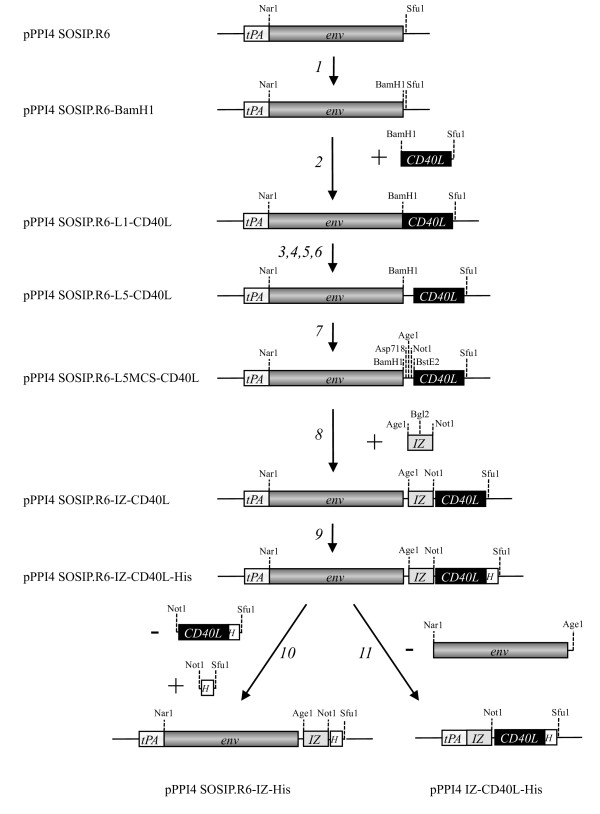Figure 1.
Cloning strategy. The following steps were carried out to obtain the constructs used in subsequent experiments: 1. Introduction of a unique BamH1 site at the C-terminus of the env gp140 sequences in the pPPI4 SOSIP.R6 plasmid; 2. Insertion of the sequences encoding mouse CD40L amino acids 118-261, amplified from J558 cells and cloned using BamH1 and Sfu1; 3,4,5,6. Insertion of various linkers between env and CD40L sequences, generated by PCR and cloned using BamH1 and Sfu1; 7. Introduction of the unique restriction sites for Asp718, Age1, Not and BstE2 in the linker (L5) between env and CD40L; 8. Insertion of the sequences encoding an isoleucine zipper (IZ) based trimerization domain, generated by annealing of oligonucleotides and cloned using Age1 and Not1; 9. Insertion of sequences encoding an oligohistidine tag at the C-terminus of CD40L; 10. Deletion of the sequences encoding CD40L to generate a plasmid encoding SOSIP.R6 gp140 fused to the IZ domain followed by a oligohistidine tag; 11. Deletion of the env sequences, generating a construct encoding a trimeric CD40L control molecule. The non codon-optimized mouse CD40L sequences were replaced by codon-optimized sequences for mouse and human CD40L using Not1 and Sfu1 (not shown in the figure). All constructs were verified by sequencing. The codon-optimized constructs were used in all following experiments, mouse or human depending on the application. More details are provided in the Materials and Methods section.

